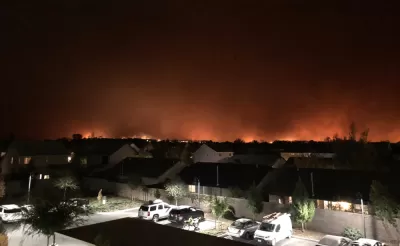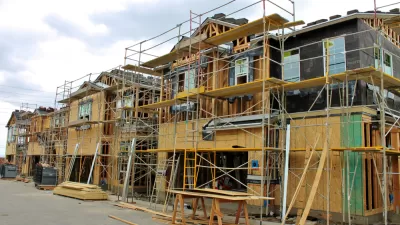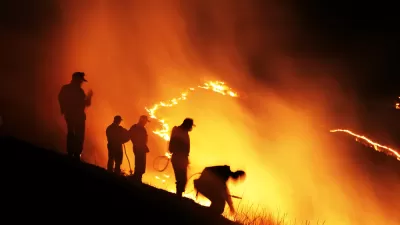New research points to global warming as the biggest factor in fueling longer, more destructive wildfire seasons.

According to new research published in the Proceedings of the National Academy of Sciences, climate change is now the primary driving factor for intensifying wildfire conditions in the western United States, reports Alex Wigglesworth.
The study found that "global warming was essentially two-thirds to 88% responsible for the atmospheric conditions fueling increasingly destructive wildfires," based on an analysis of the vapor pressure deficit. This tracks with other studies showing that 'fire weather days' are happening more frequently, creating longer, sometimes year-round fire seasons.
Fire agencies have had to pivot to new ways of fighting and preventing fires in this changed environment. They include everything from adopting new technologies such as drones and night-flying helicopters to redoubling efforts to focus on fuels management and community outreach and education.
California and the West have faced catastrophic wildfires in recent years, such as 2018's Camp Fire, which ravaged the town of Paradise, killing 85 people and burning roughly 153,000 acres. As fires grow more frequent and destructive, officials struggle to provide fire suppression resources stretched thin across multiple states and support homeowners. Last month, California's Insurance Commissioner announced that the state would bar insurance companies from dropping homeowners in fire-prone areas as an admittedly short-term fix to a growing crisis.
FULL STORY: Climate change is now the main driver of increasing wildfire weather, study finds

Planetizen Federal Action Tracker
A weekly monitor of how Trump’s orders and actions are impacting planners and planning in America.

San Francisco's School District Spent $105M To Build Affordable Housing for Teachers — And That's Just the Beginning
SFUSD joins a growing list of school districts using their land holdings to address housing affordability challenges faced by their own employees.

The Tiny, Adorable $7,000 Car Turning Japan Onto EVs
The single seat Mibot charges from a regular plug as quickly as an iPad, and is about half the price of an average EV.

Seattle's Plan for Adopting Driverless Cars
Equity, safety, accessibility and affordability are front of mind as the city prepares for robotaxis and other autonomous vehicles.

As Trump Phases Out FEMA, Is It Time to Flee the Floodplains?
With less federal funding available for disaster relief efforts, the need to relocate at-risk communities is more urgent than ever.

With Protected Lanes, 460% More People Commute by Bike
For those needing more ammo, more data proving what we already knew is here.
Urban Design for Planners 1: Software Tools
This six-course series explores essential urban design concepts using open source software and equips planners with the tools they need to participate fully in the urban design process.
Planning for Universal Design
Learn the tools for implementing Universal Design in planning regulations.
Smith Gee Studio
City of Charlotte
City of Camden Redevelopment Agency
City of Astoria
Transportation Research & Education Center (TREC) at Portland State University
US High Speed Rail Association
City of Camden Redevelopment Agency
Municipality of Princeton (NJ)





























